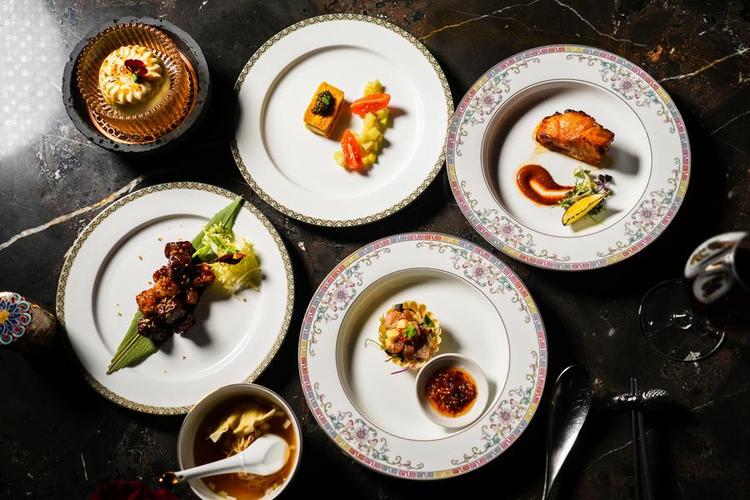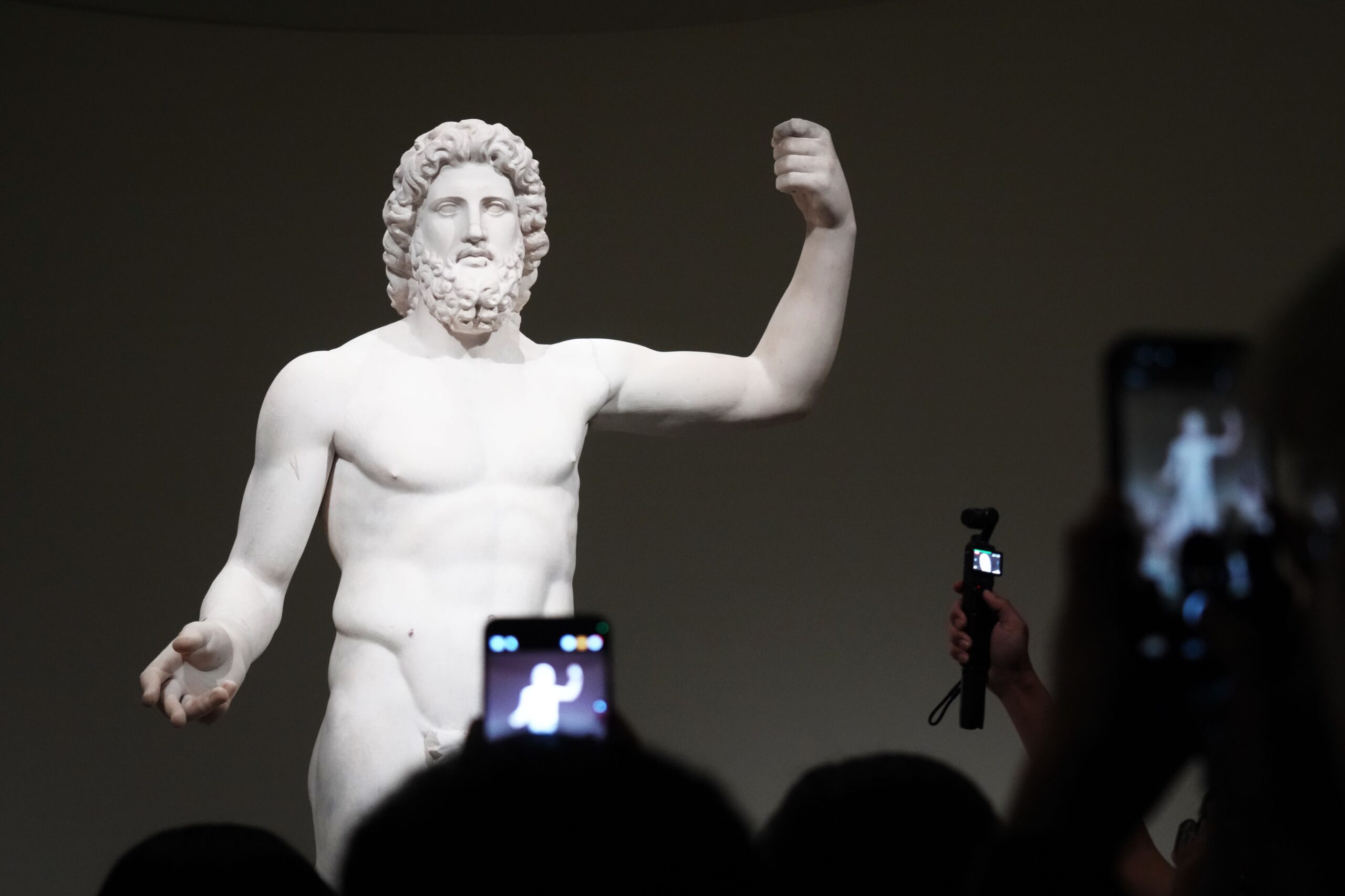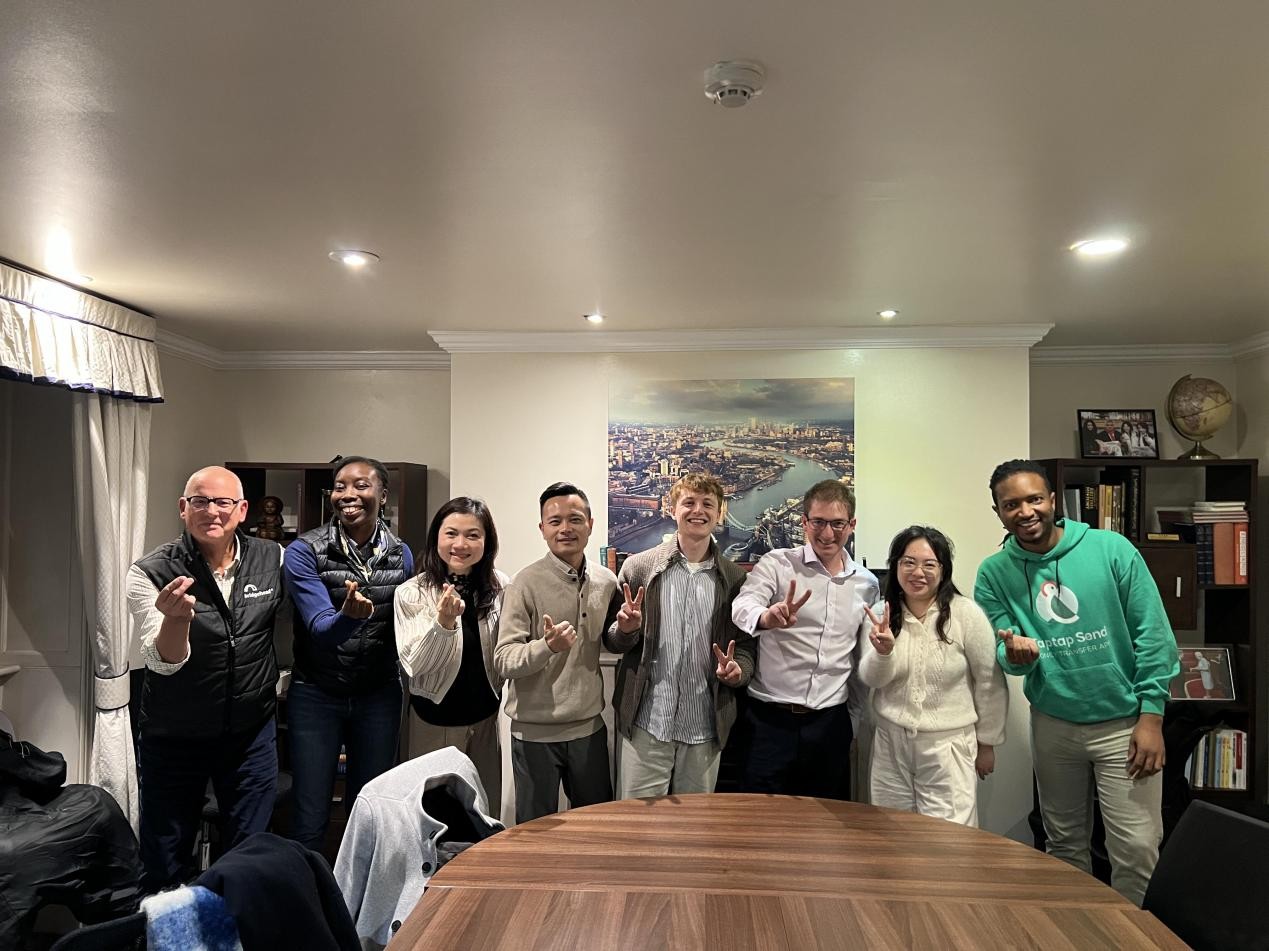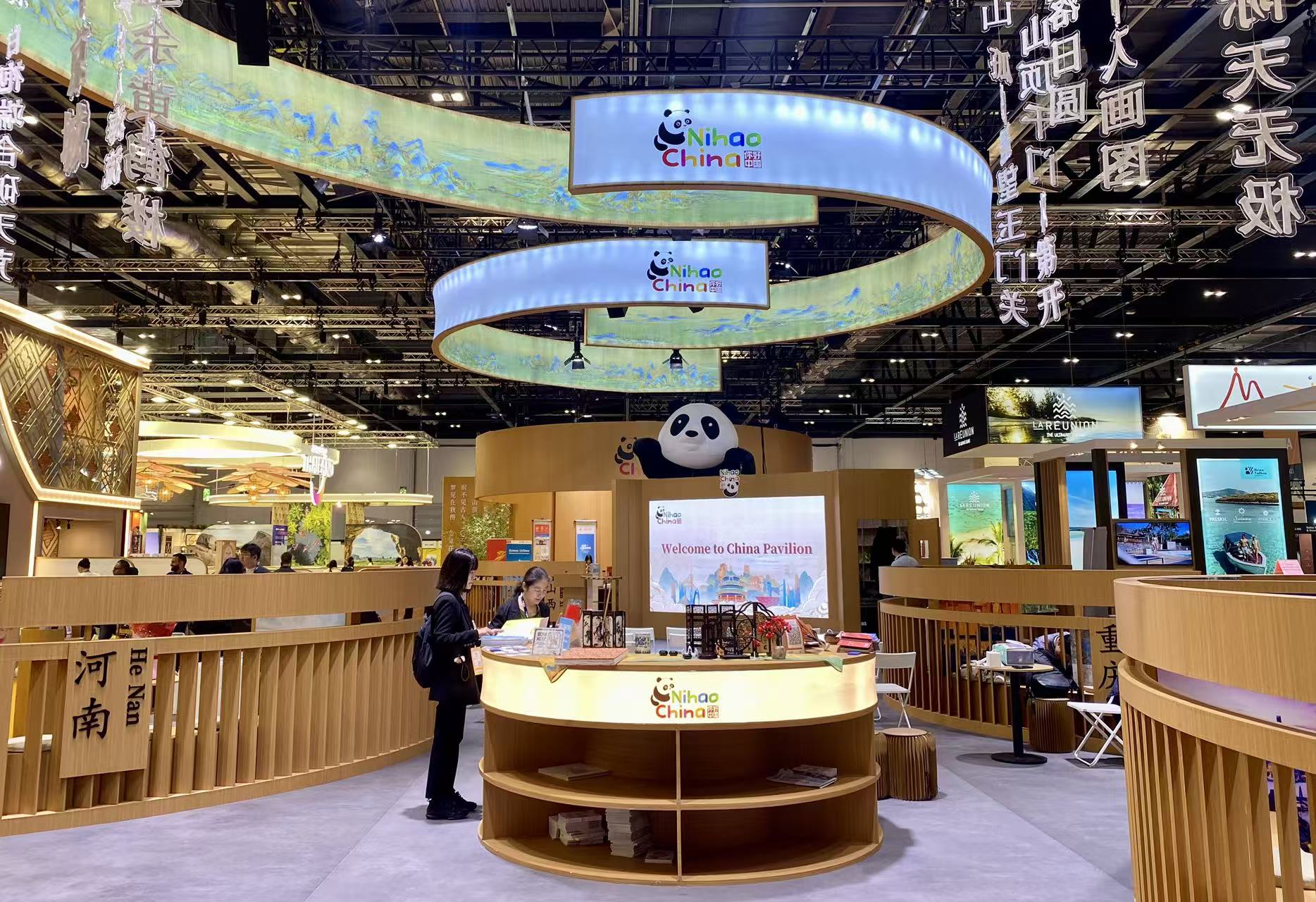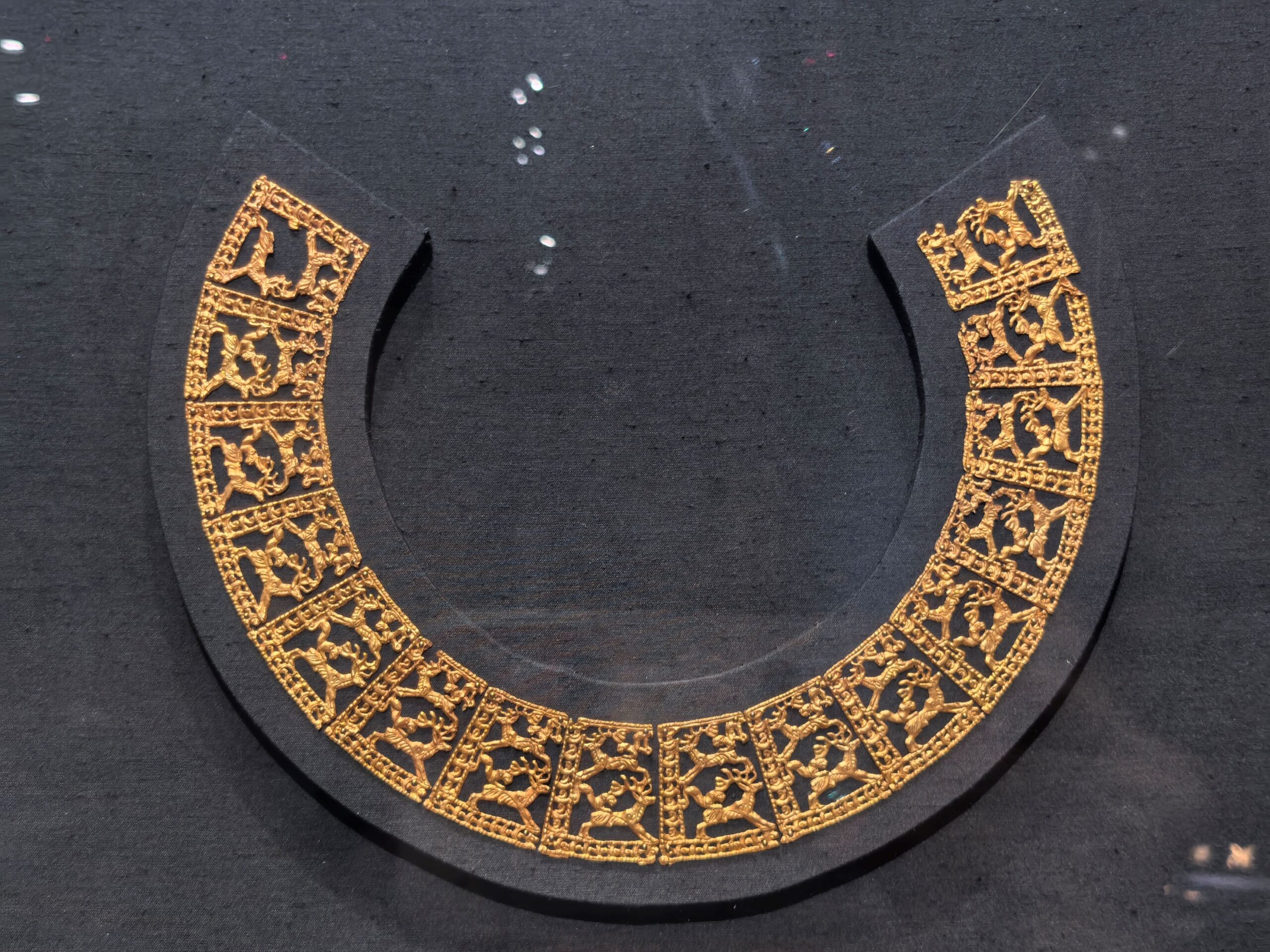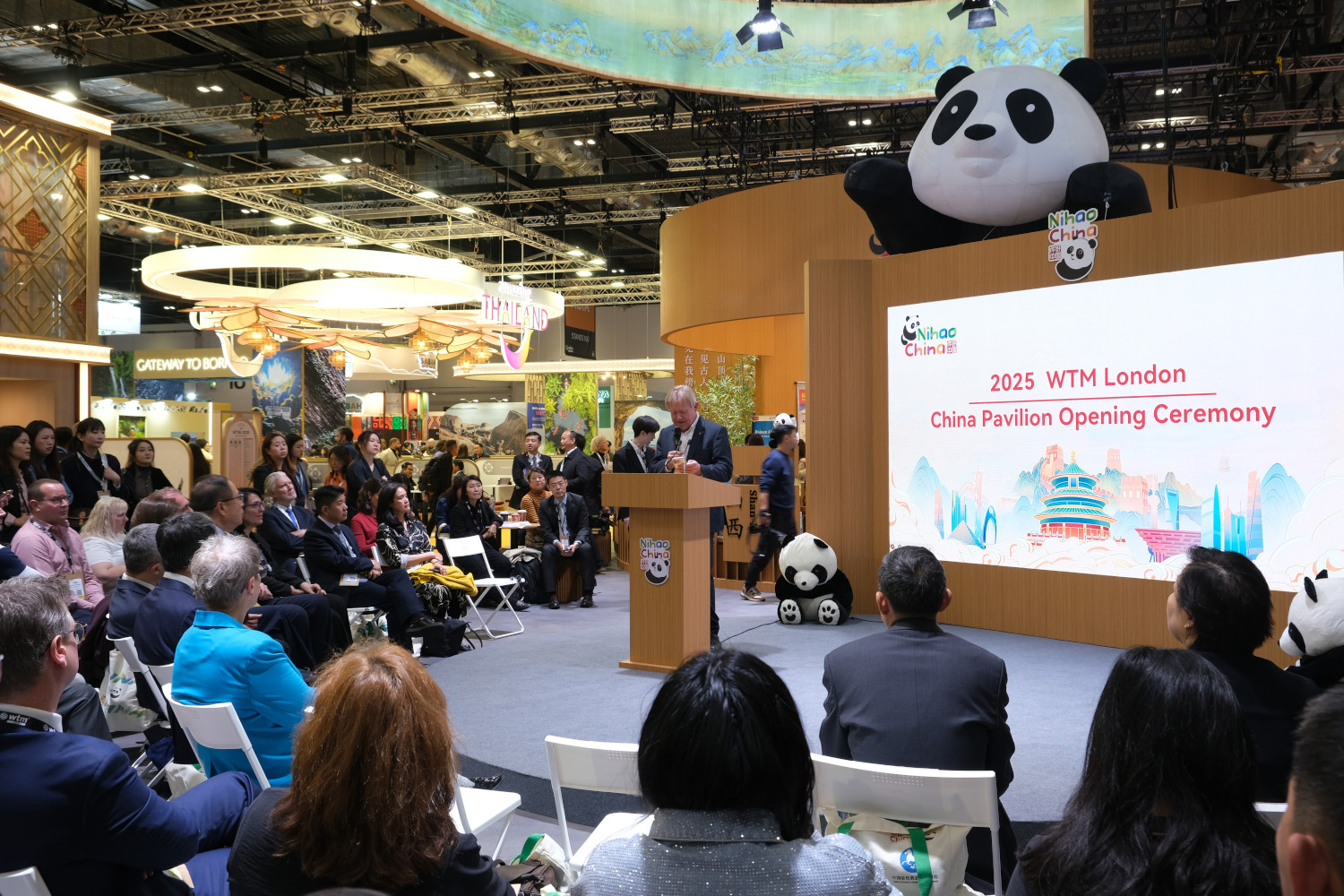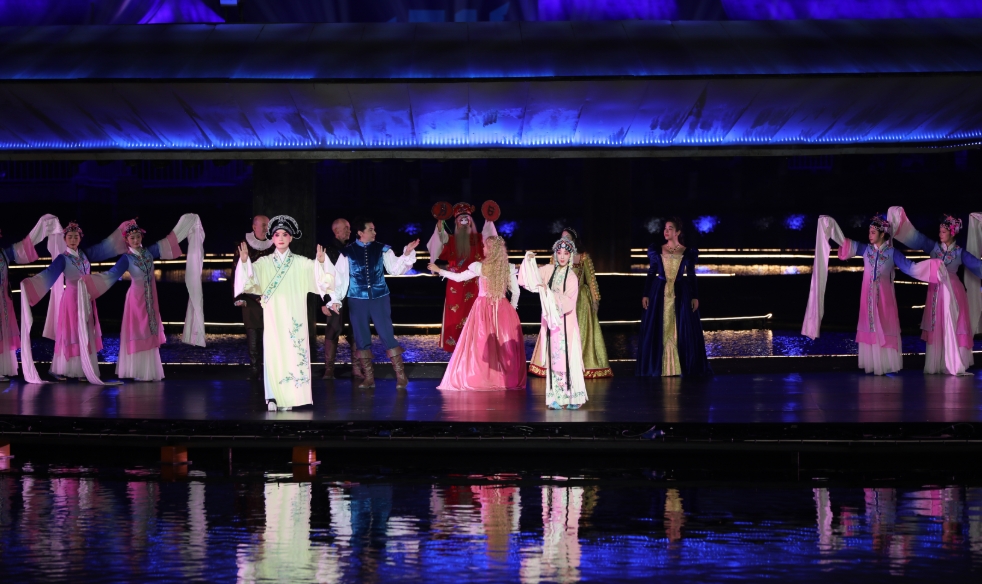Held at a Chinese restaurant near Trafalgar Square, the luncheon began not with sizzling dishes but with diners photographing the intricate lotus-and-peony motifs on pale green plates from Jingdezhen, known as China’s “porcelain capital.”
An immersive “Food + Porcelain” event in central London brought together two of China’s finest traditions — Jingdezhen porcelain and Chinese cuisine — creating a feast for both the eyes and the palate.
Held at a Chinese restaurant near Trafalgar Square, the luncheon began not with sizzling dishes but with diners photographing the intricate lotus-and-peony motifs on pale green plates from Jingdezhen, known as China’s “porcelain capital.”
“I designed every dish specifically for each porcelain,” said Chef Tong Chee Hwee, who has spent 24 years cooking Chinese cuisine in Britain.
“The colors must harmonize, but so must the tastes. It’s a dialogue between sight and palate,” he said, gesturing toward a plate of tuna tartare, as an example of the craft. He explained how the pink of the fish echoed the plate’s delicate green tone, while a Cantonese-inspired sauce added contrast.
“The floral motif on the porcelain and the osmanthus flavor in my dishes are both Chinese cultural symbols,” he said. “‘Food plus porcelain’ is more than aesthetics, it’s the power of culture made visible and edible.”
The porcelain used during the event, known as “Longzhuge,” or Dragon Pearl Pavilion, drew inspiration from the imperial kilns of Jingdezhen, where porcelain was made for Ming and Qing emperors. Once a hallmark of China’s export porcelain, Longzhuge has been reborn as a brand representing the city’s cultural revival.
The floral patterns, known as baoxianghua, blend the purity of lotus petals with the grandeur of peonies, their soft green glaze a nod to Jingdezhen’s ancient craftsmanship.
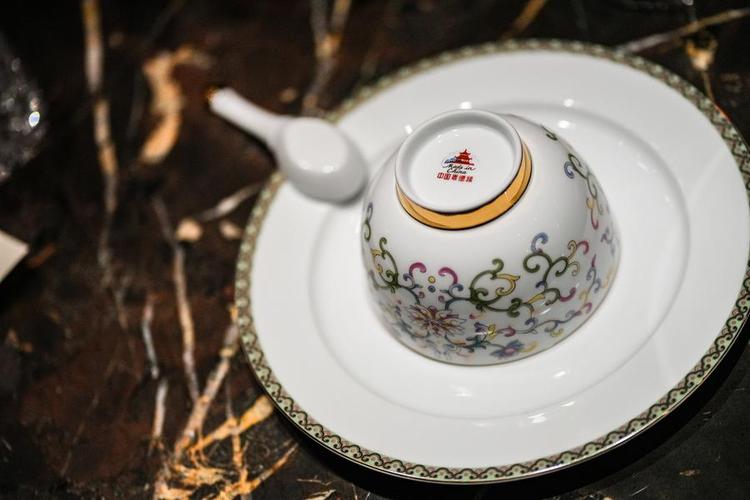
That sentiment resonated with Jessica Harrison-Hall, keeper of Asia at the British Museum and an expert on Chinese ceramics.
“What is extraordinary is how the chef played with the colors of the porcelain and used natural food dyes to create the dishes we enjoyed.”
“These pieces, though modern, echo traditional styles,” she said. “It’s a wonderful fusion between contemporary creative cooking and contemporary creative ceramic making.”
Harrison-Hall also shared a story of porcelain’s global journey. In the 17th century, a Jingdezhen bowl made for the Portuguese market bore a noble family’s coat of arms and a Latin inscription: “To the wise, nothing under the sun is new.” That single bowl later appeared in a Dutch still-life painting and inspired pottery in the Middle East.
“This one Chinese bowl,” she said, “traveled from China through the Middle East to Holland and Portugal, linking these regions together through ceramics.”
At the event, Li Liyan, minister counselor for cultural affairs at the Chinese Embassy in the United Kingdom, described Jingdezhen porcelain as “a living testament to the vitality of Chinese culture.”
From short creative videos that merge porcelain with kung fu to new designs that blend traditional forms with modern aesthetics, he said, each piece reflects both heritage and innovation. “We hope more people in Britain will fall in love with Chinese porcelain art, and that our two countries can find more points of resonance through cultural exchange.”

Europe’s fascination with Chinese porcelain is centuries old. During the Ming and Qing dynasties, porcelain from Jingdezhen crossed oceans on merchant ships, becoming prized among European nobility. Today, that legacy continues as Chinese and international artists collaborate in Jingdezhen, merging traditional blue-and-white porcelain with modern sculpture and design.
Harrison-Hall said Jingdezhen’s influence will continue to grow. “Jingdezhen has an extraordinary wealth of talent and an incredible history of more than a thousand years in porcelain making,” she said. “Jingdezhen will hopefully continue to stand at the forefront of a new and vibrant stage in this creative process.”
“To enjoy Chinese cuisine presented on Jingdezhen porcelain — this is something I never imagined I’d experience in London,” said Alexander Randall, among the diners at the event.
This article as originally written by Gao Wencheng. If you like this article why not read: The “Sweet Palace” in Tibet Gets Its Annual Makeover of Milk and Honey

